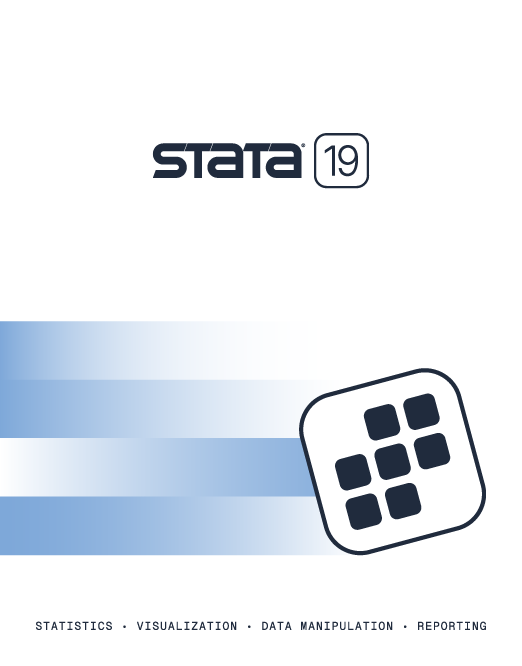
| 10:15–10:45 | Friendship-kinship network and access to formal-informal credit in India
Abstract:
I examine the association between the friendship-relative (FR) network and borrowings from market lenders in the context of Indian households. I explore various channels that may affect the observed associations, if any.
Additional information:
Pallabi Chakraborty
Tata Institute of Social Science
|
| 10:45–11:15 | Stata’s capabilities for frontier efficiency assessment
Abstract:
The development of a comprehensive suite of packages and commands within Stata has empowered researchers to conduct frontier efficiency and productivity assessments effectively.
Additional information:
Rachita Gulati
Indian Institute of Technology Roorkee
|
| 11:15–11:45 | Network, exposure, and benefits of short-term training
Abstract:
The MES training had a provision to be delivered through the Industrial Training Institutes (ITIs), which traditionally provide long-term training. It observed that the candidates who received MES training in an ITI setup tend to perform better than those who graduated from other private MES training providers.
Additional information:
Tutan Ahmed
IIT Kharagpur
|
| 12:00–1:00 | Introduction to difference in differences in Stata 18
Abstract:
This presentation will briefly introduce the concepts and jargon of difference-in-differences (DID) models and show how to fit the models using Stata’s suite of DID commands.
Additional information:
Chuck Huber
StataCorp
|
| 1:00–1:30 | Understanding missing data in COVID-19 medical records and their impact on prognostic modeling
Abstract:
Multiple imputation was done with the chained equations method. Further, convergence, stability, and other diagnostics of the imputation were done to identify its appropriateness for model building. Analysis was conducted in Stata software.
Additional information:
Jitu Sharma
Amity University Uttar Pradesh
|
| 2:15–2:45 | Estimates of households characterized by low pay in rural India
Abstract:
I analyze data from the first three rounds of the Periodic Labour Force Survey and provide estimates of households whose monthly per capita household earnings is below a threshold in India.
Additional information:
Vasavi Bhatt
Indian Institute of Management Tiruchirappalli
|
| 2:45–3:15 | Distribution of employment opportunities in India
Abstract:
The Indian constitution, through its various legislations, promotes equal opportunities for all in both public and private employment to ensure fair wages and decent working conditions.
Contributor:
Srijit Mishra
Indira Gandhi Institute of Development Research
Additional information:
Shreshti Rawat
Indira Gandhi Institute of Development Research
|
| 2:45–3:15 | Spatial market integration and price transmission analysis of egg markets in India
Abstract:
The present study analyzes the spatial integration of 10 major wholesale egg markets in India, which all together cater to 90% of egg volume and trade in the country, utilizing the monthly egg price data from January 2009 to December 2022.
Additional information:
B. Swaminathan
Junagadh Agricultural University
|
| 3:30–4:00 | Estimation of demand system elasticities using Stata
Abstract:
This presentation aims to share the experience of estimating of elasticities and analyzing the consumption pattern at the household level. It highlights the use of Stata commands in the estimation and postestimation of various demand models over the period of two decades in academia.
Additional information:
M. Prahadeeswaran
Tamil Nadu Agricultural University
|
| 2:45–3:15 | Impact of pretransplant hemodynamic on survival after heart transplantation
Abstract:
The outcome of 429 isolated heart transplants performed at a
single institution and followed up to 10 years was analyzed for
the impact of pretransplant hemodynamics on long-term survival
using Stata 18 with its capabilities in
generating Kaplan–Meir survival curves, logistic regression, Cox
regression, forest plots and various graphic capabilities,
including margins plots and tables. The advantages of Stata and
the comparison with other software, including R and MATLAB,
will be discussed.
Additional information:
K. R. Balakrishnan
MGM Hospitals
|
1–2 December
This course covers how to use Stata for survey data analysis assuming a fixed population. It begins by reviewing the sampling methods used to collect survey data and then discusses how they act in the estimation of totals, ratios, and regression coefficients. It then covers variance estimation methods implemented in Stata’s survey estimation commands. The course will also cover strata with a single sampling unit, certainty sampling units, subpopulation estimation, and poststratification. Interactive Stata sessions are dispersed between lectures.

The logistics organizer for the 2023 Indian Stata Conference is Systech Technocraft Services Pvt. Ltd., the official distributor of Stata in India.
View the proceedings of previous Stata Conferences and Users Group meetings.